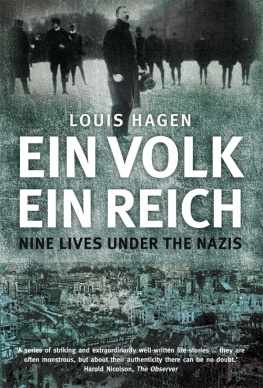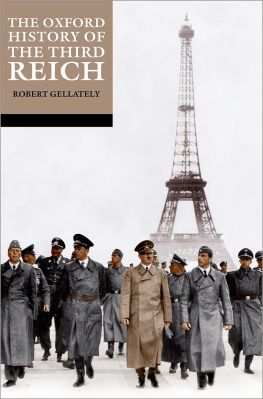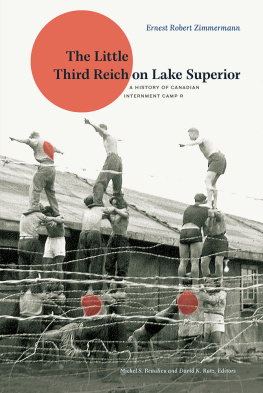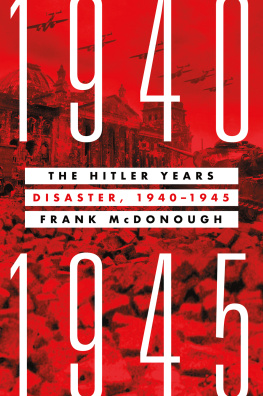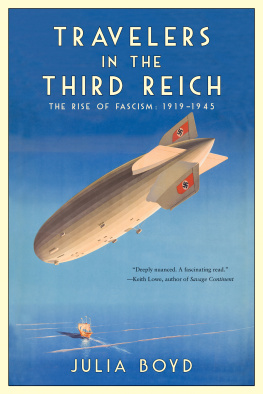About the Author
Colin Philpott has a long-standing interest in recent German history and in abandoned buildings and venues.
His first book, A Place in History, looking at the impact on places where news stories happened in twentieth-century Britain, was published in 2012. His drama The Last Match, about the last day of peace before the Second World War, was first performed in 2014.
He is a former Director of the National Media Museum and was a BBC programme-maker and journalist for twenty-five years. Alongside his writing, he now works as a non-executive director, a producer on creative and media projects and as a radio and event presenter.
He lives in Yorkshire.
First published in Great Britain in 2016 by
PEN AND SWORD MILITARY
an imprint of
Pen and Sword Books Ltd
47 Church Street
Barnsley
South Yorkshire S70 2AS
Copyright Colin Philpott, 2016
ISBN: 978 1 47384 424 7
PDF ISBN: 978 1 47384 427 8
EPUB ISBN: 978 1 47384 425 4
PRC ISBN: 978 1 47384 426 1
The right of Colin Philpott to be identified as the author of this work has been asserted by him in accordance with the Copyright, Designs and Patents Act 1988.
A CIP record for this book is available from the British Library.
All rights reserved. No part of this book may be reproduced or transmitted in any form or by any means, electronic or mechanical including photocopying, recording or by any information storage and retrieval system, without permission from the Publisher in writing.
Printed and bound in England by
CPI Group (UK) Ltd, Croydon, CR0 4YY
Typeset in Times by CHIC GRAPHICS
Pen & Sword Books Ltd incorporates the imprints of
Archaeology, Atlas, Aviation, Battleground, Discovery, Family History, History, Maritime, Military, Naval, Politics, Railways, Select, Social History, Transport, True Crime, Claymore Press, Frontline Books, Leo Cooper, Praetorian Press, Remember When, Seaforth Publishing and Wharncliffe.
For a complete list of Pen and Sword titles please contact
Pen and Sword Books Limited
47 Church Street, Barnsley, South Yorkshire, S70 2AS, England
E-mail:
Website: www.pen-and-sword.co.uk
This book is dedicated to
all the victims of National Socialism
* * *
Contents
Introduction Collective Guilt?
(Kollektivschuld?)

Prora-Rgen Kraft durch Freude (Strength through Joy) Holiday Complex at Rgen Island on the Baltic Coast (George Wiora)
It was one of the darkest, albeit short-lived, periods in human history the reign of terror unleashed by Nazi Germany in the 1930s and 1940s. The sense of shame, guilt and disgust associated with such an evil regime is heightened because it arose in an apparently developed, sophisticated and cultured country. After three quarters of a century an enduring fascination with the Third Reich remains even though very few people who could be said to be meaningfully complicit in its horror are still alive.
The Nazi story still exerts, particularly for people in the western democracies, a powerful hold. This is, of course, because of the industrial scale of the warmongering and genocide, the consequences of which still reverberate through history. It is also because of a need to understand whether the moral degradation to which Germany slumped was a particular product of a peculiar set of circumstances or whether it could have occurred elsewhere.
Inevitably, when studying the history of Nazi Germany, we are asking the question how could this happen? How could a civilised nation allow itself to be taken in by such an evil philosophy? Much has been written and continues to be written about this but perhaps rather less attention has been given to an equally fascinating question how did post-war Germany recover from such a catastrophic episode in its history and rediscover the core values of civilised society, arguably as quickly as it had lost them?
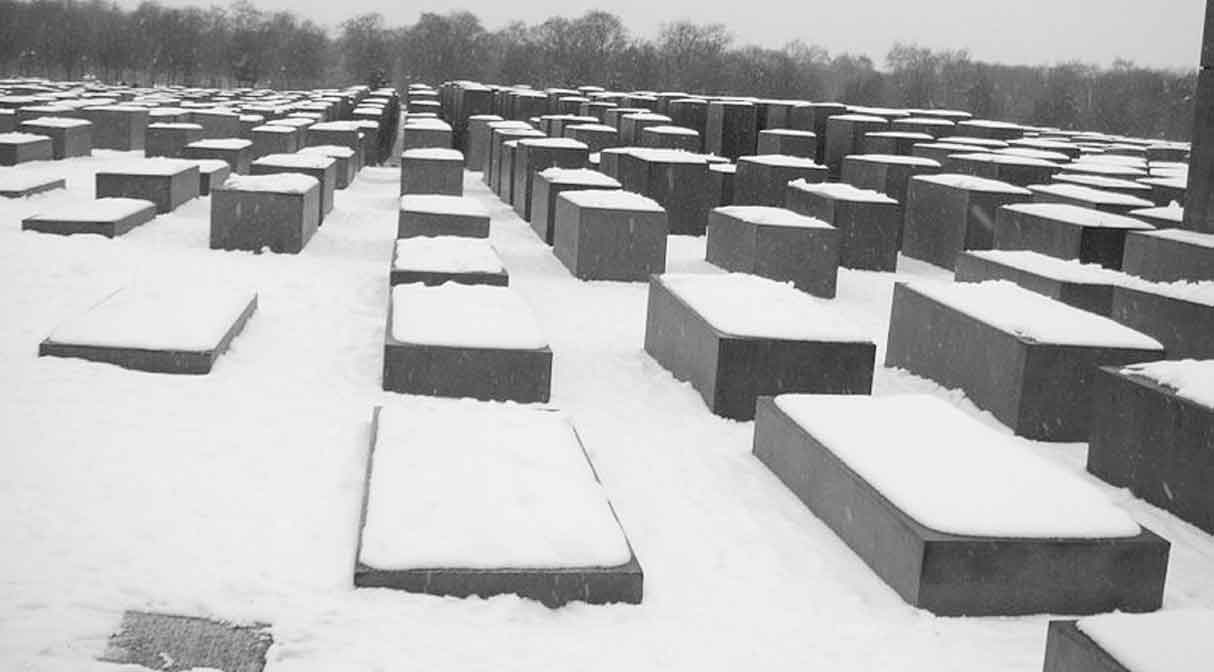
The Holocaust Memorial was designed by Peter Eisenman and opened in 2004 on the sixtieth anniversary of the collapse of the Third Reich (Txalapartari)
The development of national rehabilitation for post-war Germans, both for those implicated in the Nazi era and the innocent generations who followed them, has involved coming to terms with the legacy of the Third Reich. This process is incomplete and still divides opinion. This book looks at one, hitherto relatively unexplored, aspect of this the physical legacy of the Nazis, their buildings, their structures and their public spaces.
The Nazis were inveterate builders. Like many regimes, particularly dictatorships, one way they sought to secure their place in history and immortalise themselves and their ideas was through their architecture. They bequeathed a vast, largely unwanted, physical legacy to post-war Germany. Some of their buildings had been designed specifically as instruments of terror. Some were grandiose and built as statements. Some were functional and utilitarian. Hitler took a close personal interest in architecture and, aided by his loyal acolyte, the architect Albert Speer, built many and planned even more.
Seventy years after the Fhrer committed suicide in his Berlin bunker much of the architectural legacy left behind in 1945 remains with us. Nearly every member of the Nazi High Command died as the regime collapsed, either at their own hands or executed following the Nuremberg trials. It is, however, perhaps symbolic that Speer, who controversially escaped the noose at Nuremberg, survived (until 1981) and with him much of the architecture he created.
Immediately after the collapse of Nazi Germany in 1945 with the dislocation, disintegration and division that followed the fate of this architectural heritage was the least of Germanys worries. Some of the sites most symbolic of the evil of the regime were destroyed by the Allies. Many buildings were pressed into service with new uses as the desperate quest for survival took priority. Others remained ignored by a nation preoccupied with a harsh, daily grind and embarrassed by the physical detritus of the Third Reich. Furthermore the issue of the Nazi legacy, for several decades after 1945, became intertwined with the division of Germany and the playing out of the Cold War in that divided country.
Studying this physical legacy makes for a fascinating journey, not out of some morbid curiosity for a dark period of history, but because a sense of place, wanting to be there, and wanting to tread where history was made are undeniable parts of the human psyche. Focussing on the places where the deadly Nazi story unfolded serves to remind us of the depths to which humanity sank. It can also act as a commemoration of mankinds deliverance from a dark decade and serve as a renewal of our commitment to ensure history does not repeat itself.
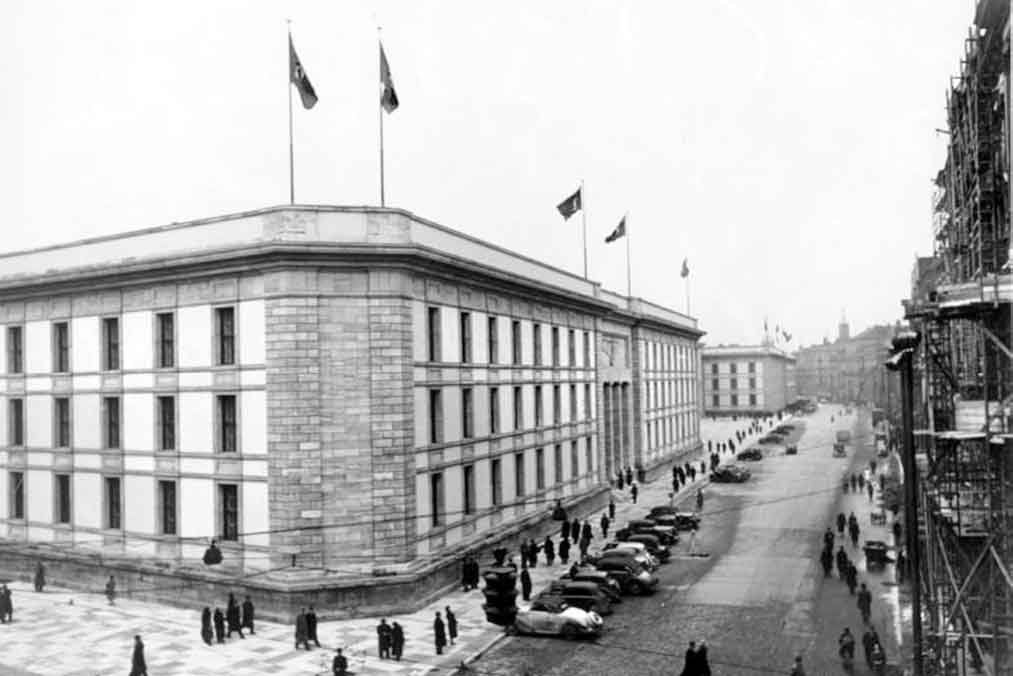
The New Reich Chancellery with its grand interior designed by Albert Speer, Berlin, 1939 (Bundesarchiv, unknown)
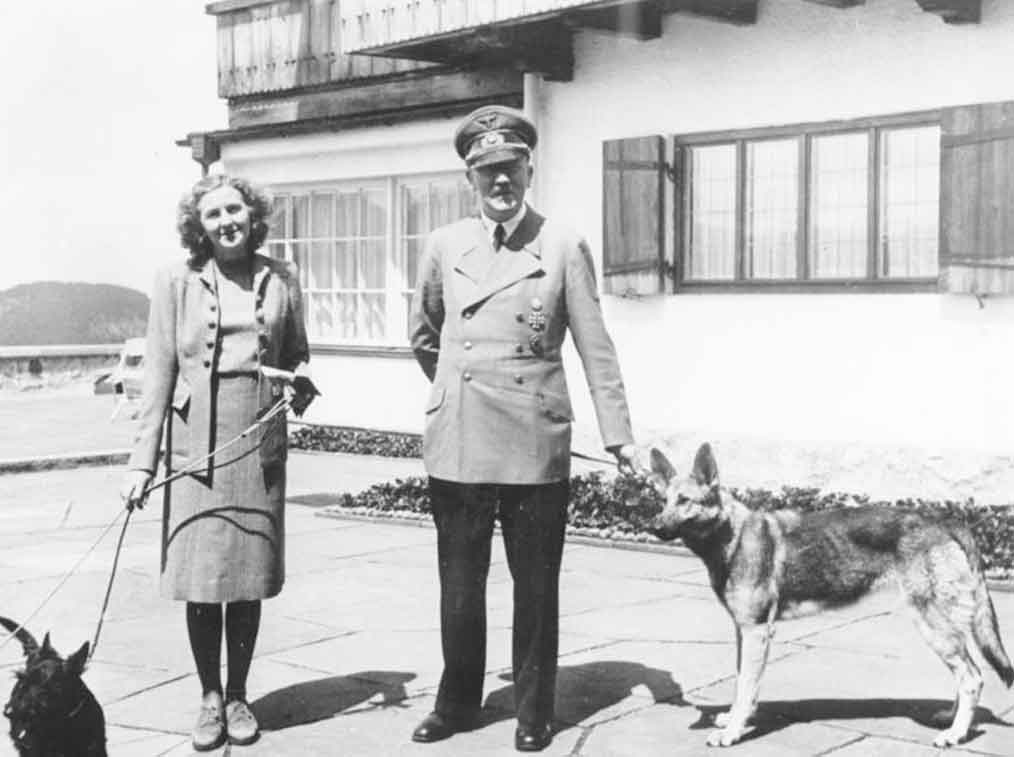
Adolf Hitler and Eva Braun at the Fhrers mountain retreat, the Berghof on the Obersalzberg in Bavaria, June 1942 (Bundesarchiv, unknown)
This book examines a selection of places which feature in the Third Reich story. Most of them were built during the Nazi period although some predated it but were adopted by the Nazis. It is not a comprehensive list of every building and site associated with the Nazis nor is it some sort of dark tourism travel guide. Where appropriate, the book contains my personal feelings about the experience of visiting these sites because doing so raises all sorts of questions about ones own motivations and reactions on seeing places so associated with such a terrible period.
Next page






